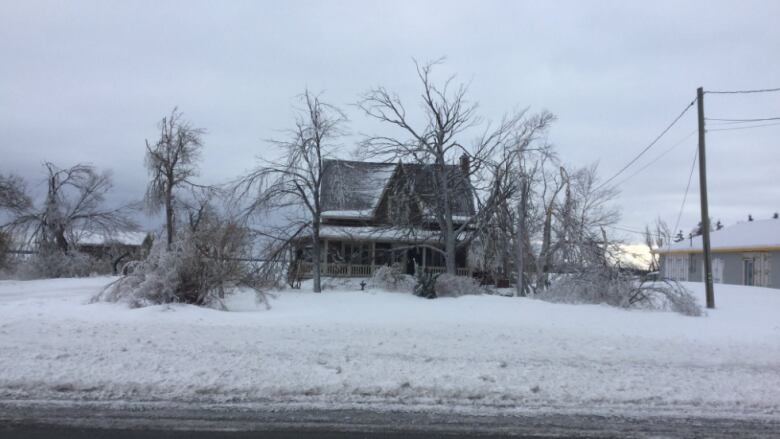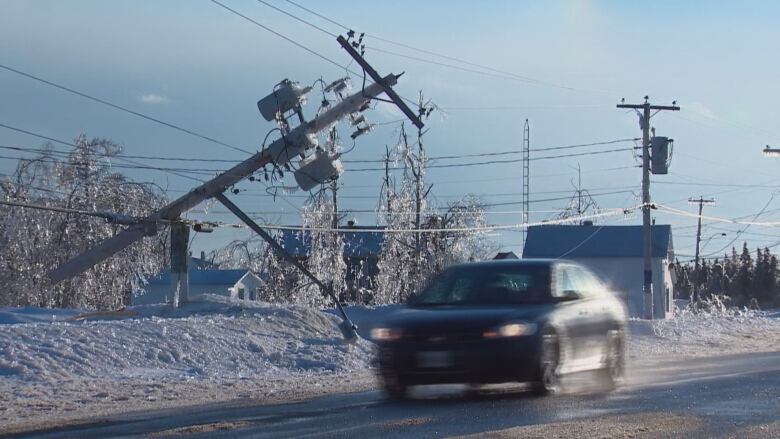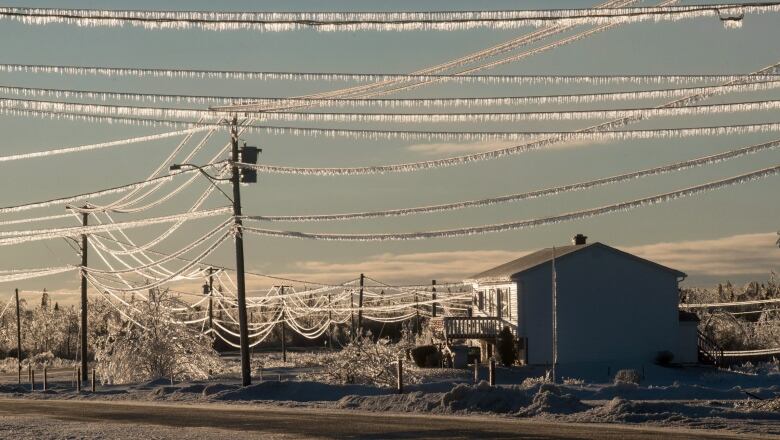Ice storm 2017: Roles need to be clarified in crisis, says AFMNB
'We need to improve the way we manage this kind of crisis'

The Association francophone des municipalits du Nouveau-Brunswick has compiled nearly two dozen recommendations in a report on the provincial response to the January ice storm that caused thousands of power outages and led to two deaths.
Frederick Dion, the association's executive director, said 22 recommendations were sent to Judy Wagner, the head of the provincial public service, who willpresent a report on the ice storm disaster on July 31.
"It's not a report to blame anybody," said Dion. "We don't want to put the blame on the provincial government or the other stakeholders that were involved in the crisis."

The ice storm that began in southern New Brunswick on Jan. 24 and spread to the northeast the following day led to 133,000 homes and businesses being without electricity at its peak. About 200,000 customers lost service at some point as a result of the storm.
There weretwo deaths and 45 people hospitalizedas a result of carbon monoxide poisoning, typically from the use of generators or barbecues in garages or homes.
Premier Brian Gallant ordered the high-level review of the response to the ice storm disaster.
The AFMNB's28-page report instead offers suggestions on howto improve the management of emergency measures.
Surveys and feedback
Dion said therecommendations came from surveys conductedwith the association's members and other feedback. AFMNBrepresents53francophoneand bilingual municipalities in New Brunswick,
Dion said they want what happened during the January ice storm used as a way to improve how local authorities, municipalities and theprovince respond to similar crises.
"We shouldtry to improve the way we are organizing and the way we respond with emergency measures in that kind of event that will happen more often in the future," he said.
Dion said the role and responsibility of each stakeholder should be clarified.
"In the non-incorporated areas, in the local service districts we need to make it clear who is responsible, who will help when an event like that happens."
Dion said even in the municipalities it wasn't perfect but there were resources available and structure to bring help to the residents.
"But in the (localservice districts) some of the people were left there alone and they were left without any help," he said. "That cannot happen in the future. We need to improve the way we manage this kind of crisis."
More co-ordinators
AFMNB is also asking that regional emergency response coordinators double from six to 12.
Dion said more emergency preparednesstraining for teams that will be working on the ground if a crisis happens again needs to be offered in the local regions and in French.

"We need to decentralize to give more to that training in regions where it is more accessible."
Dion said 80 to 90 per cent of workshops offered were in English.
"We need to have a balance here of what is offered in French and what is offered in English. It's not a matter of rights here, it's a matter a security and the health of the people."
Dion said they are hoping to receive a response to their recommendations.












_(720p).jpg)


 OFFICIAL HD MUSIC VIDEO.jpg)
.jpg)



























































































